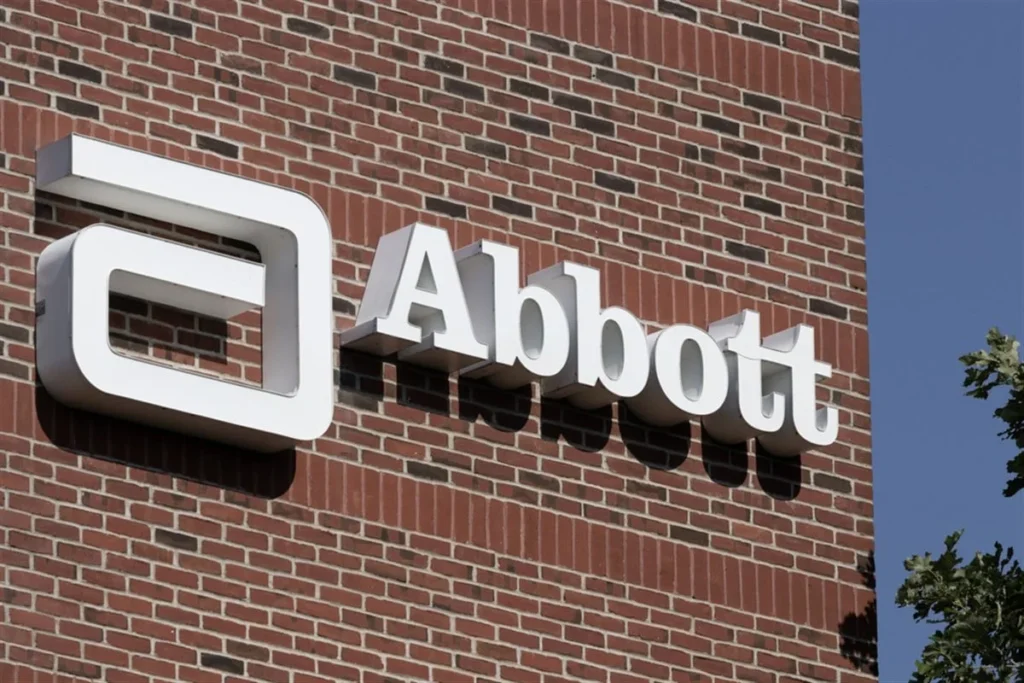Abbott Labs Lowers, a global healthcare giant known for its diagnostics, medical devices, and nutrition products, recently surprised investors with a mixed message: while the company posted gains in both profit and sales, it lowered its full-year outlook, citing various macroeconomic and industry-specific challenges.
This announcement has sparked discussion among market analysts and shareholders, with many wondering why a company with such positive financial performance would choose to revise its expectations downward. Let’s take a closer look at what led to this decision, how Abbott is currently performing, and what the future might hold.
Understanding Abbott’s Q2 2025 Financial Report
Abbott Laboratories released its second-quarter results for fiscal year 2025, which showed impressive growth in both profit and revenue. However, instead of celebrating the financial gains, the company decided to pare down its full-year earnings forecast, sending a wave of caution through the investor community.
Here’s a quick snapshot of Abbott’s Q2 numbers:
- Revenue: $10.5 billion (up 6.2% year-over-year)
- Net income: $2.01 billion (up from $1.96 billion a year ago)
- Earnings per share (EPS): $1.14 (beat Wall Street estimates)
- Diagnostics sales: $2.1 billion (strong performance, driven by base business)
- Medical devices: $4.3 billion (boosted by demand for cardiovascular products)
Despite these solid numbers, the company revised its full-year adjusted EPS guidance to $4.30–$4.50, down from the previously forecasted range of $4.50–$4.70.
Why Did Abbott Labs Lowers Its Outlook?
On the surface, Abbott’s Q2 results look healthy. So what’s behind the cautious forecast? Company leadership pointed to several key factors:
1. Slowing Global Demand in Key Segments
CEO Robert Ford noted that while core business lines like cardiovascular and diagnostics are performing well, there are signs of slowing demand in international markets, especially in emerging economies where inflation and currency pressures are impacting healthcare budgets.
2. Tapering COVID-19 Testing Revenue
Abbott was a leading provider of COVID-19 tests during the pandemic. As the world moves into a post-pandemic phase, sales of rapid tests have declined sharply. In Q2 2025, COVID-19 testing contributed only $100 million in sales, compared to billions in previous years.
This significant decline has created a year-over-year headwind that Abbott has yet to fully offset with other product lines.
3. Currency Fluctuations
A strong U.S. dollar continues to impact Abbott’s overseas earnings. Since the company generates more than 60% of its revenue outside the U.S., currency volatility has added pressure to its bottom line.
4. Ongoing Cost Inflation
Despite falling raw material prices in some areas, Abbott is still dealing with higher logistics and labor costs, especially in its medical devices and nutrition businesses. These costs are squeezing profit margins and reducing earnings visibility.
Investor Reactions to the Outlook Cut
Markets responded cautiously to Abbott’s announcement. Although the company beat earnings expectations, shares dipped nearly 2% in early trading following the report.
Analyst Sentiment
Several analysts have maintained a “Hold” or “Buy” rating, suggesting that the outlook revision is more of a short-term recalibration than a long-term concern.
Morgan Stanley noted,
“Abbott’s core franchises remain strong, particularly in cardiovascular devices and diagnostics. The revised outlook is reflective of prudent risk management rather than a sign of weakness.”
However, Goldman Sachs was slightly more cautious, highlighting that lowered expectations could signal softness in emerging markets and over-reliance on base business growth.
Strong Segments Keep Abbott Resilient

Even with a conservative forecast, Abbott’s diversified portfolio provides stability. Here’s how some of its key segments are performing:
Medical Devices
This remains Abbott’s largest and fastest-growing business. In Q2:
- Cardiac rhythm management and structural heart products saw strong demand
- Neuromodulation and diabetes care devices, like the FreeStyle Libre, experienced increased adoption
The FreeStyle Libre glucose monitoring system continues to lead in the diabetes tech market, with sales up 20% year-over-year. Abbott is also expanding this product in Asia and Latin America.
Diagnostics (Excluding COVID-19)
The base diagnostics business posted steady growth, driven by demand for molecular and rapid testing platforms in hospital and lab settings. Abbott’s Alinity systems are being widely adopted across hospitals, improving automation and accuracy.
Nutrition
Sales in the nutrition segment rose 4%, driven by infant formula and adult nutrition products. However, the company is still working to rebuild trust after past supply chain issues in its baby formula business.
Established Pharmaceuticals
In emerging markets, branded generics performed reasonably well, but currency impacts and inflation made this segment slightly volatile.
What’s Next for Abbott Labs?

Despite trimming its full-year guidance, Abbott remains in a strong competitive position, thanks to:
- Continued innovation in med-tech and diagnostics
- Strong R&D investment, especially in digital health
- Resilient demand in core healthcare segments
- Focus on operational efficiency to counter inflation
Abbott is also preparing to launch new versions of existing products, including next-gen heart valves, expanded Libre systems, and automated diagnostic platforms. These launches are expected to fuel future revenue growth.
CEO’s Optimistic Tone Despite Cut
CEO Robert Ford emphasized that the guidance revision was a strategic decision based on current market realities.
He stated,
“We delivered another quarter of strong performance. While we’re revising our full-year outlook to reflect macro headwinds, our core business remains strong, and we’re confident in our long-term growth trajectory.”
This sentiment echoes Abbott’s history of resilience and adaptability, even during difficult times like the pandemic or global supply chain crises.
Should Investors Be Concerned?
While a lowered outlook can sometimes raise red flags, in Abbott’s case it seems to reflect short-term caution, not long-term weakness. The company is still generating billions in profit and growing in key areas.
Key Takeaways for Investors:
- Abbott remains a well-diversified healthcare leader
- The lowered outlook is mostly due to external factors, not internal weaknesses
- Core products like FreeStyle Libre, Alinity, and cardiac devices continue to drive growth
- The company is investing heavily in R&D and expansion into emerging markets
If you’re a long-term investor, this may be a good opportunity to hold or even increase your position as Abbott navigates through macroeconomic turbulence with strategic clarity.
Conclusion: A Cautious but Strong Abbott
In summary, Abbott Labs lowers outlook despite reporting solid profit and sales gains, a move that reflects responsible financial management amid ongoing global challenges.
The company remains a pillar in the healthcare sector, with strong fundamentals, a proven leadership team, and a product lineup that addresses both present and future healthcare needs.
For investors and industry watchers, the takeaway is clear: Abbott is not in trouble — it’s simply being realistic. And in today’s uncertain global economy, realism may be one of the most important assets a company can have.
Read Next – PepsiCo Revenue Rises Despite Lower North America Volumes






